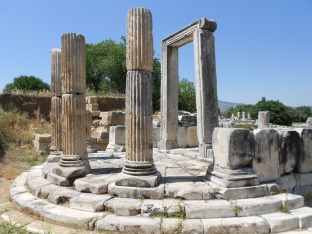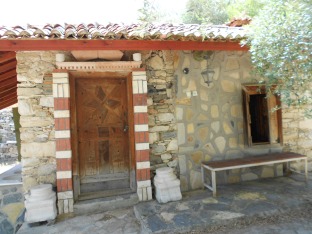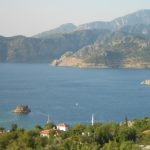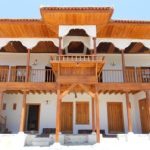Due west of the small town of Yatağan, at Turgut near Milas, lie the ruins of Lagina (Hieracome), an ancient site famous for its temple to the goddess of witchcraft, Hecate, that was originally excavated by the famous artist and museologist, Osman Hamdi Bey. Built temples ot Hecate are extremely rare as she was a goddess more regularly worshipped by night at crossroads locations. This temple was linked to Stratonikeia, 10km away, by a Sacred Way.
Approaching the site your heart sinks as you turn off the main Yatağan-Milas road towards industrial Turgut, passing a huge power station, then a marble quarry and an open-cast coal-mine. Then suddenly a small road on the right wanders off into olive groves and what seems like a completely different world.
This is a very under-visited site. However, on arrival you’ll immediately see the impressive remains of a propylon that was the entrance gate.The site centrepiece is the remains of the temple to Hecate. The marble floorslabs and steps are so thrown about that one must assume the temple was brought low by an earthquake in antiquity. In 2020 many of the columns with their interesting, vaguely Egyptian-looking elongated Corinthian capitals were re-erected.
To the left of the main temple stands what appears to be another one with an unusual apsidal end. Facing it is what I assume to have been a stoa. Today irrigation water flows along a stone channel behind it, a lovely, refreshing sound on a hot summer’s day. 
Up more marble steps lying at extraordinary angles some huge marble slabs are protected beneath a shelter but without any information. Other more interesting pieces of fine carved masonry lie scattered about in the adjacent areas.
Finally, tucked away amid the olive trees is a tiny stone cottage with a pretty doorway and a fine stone chimney. Locked when I visited, it may serve as a cafe in high season. Even today many would be happy to live here, surrounded by roses and with fine views of oddments of marble taken from the site.
The site is especially pretty in May when the Judas trees are in blossom.
The friezes from the Temple of Hecate are on display in the İstanbul Archaeological Museum which was established by Osman Hamdi Bey.
Backstory
It is not known precisely when the temple was established here although the British archaeologist George Bean believed the most likely foundation date to have been between 125 and 80 BC. In 27 AD the emperor Augustus appears to have part-financed reconstruction of the temple which had been sacked by Labienus in 40 BC.
It was here that a festival called the Hecatesia-Romaea was celebrated every four years. In addition every year there was a festival called “the Bearing of the Key” when girls walked to Stratonikeia and returned again with one of them carrying a symbolic key.
 Cottage on siteTransport info
Cottage on siteTransport info
To get to Lagina by public transport you can take a bus from Yatagan to Turgut (Leyna) and then walk for about 1.5km to the site down a shady side road that passes a somewhat polluted circular stone pond that probably fed the fountains in the temple precinct.


